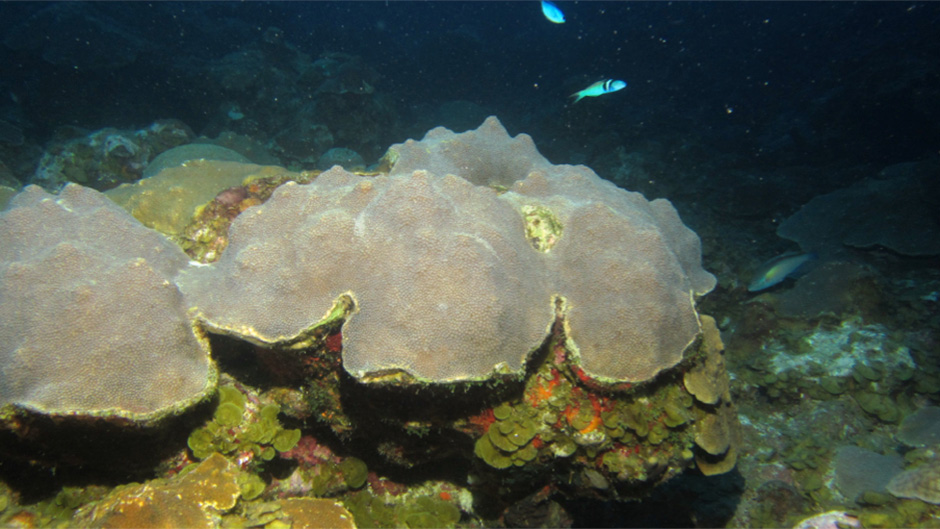A research team led by the University of Miami Rosenstiel School of Marine and Atmospheric Science analyzed the sediments of mesophotic coral reefs – deep reef communities living 30-150 meters below sea level – to understand how habitat diversity at these deeper depths may be recorded in the sedimentary record.
The findings showed that sediments provide an important record of the bottom dwelling organisms that formed the architecture of coral reef ecosystems and support their high biodiversity today.
Coral reefs support more than 25 percent of ocean organisms, making them one of the most bio-diverse ecosystems on the planet. Studying how biodiversity evolved on deeper, mesophotic reefs can help scientists interpret the origins of their economically important shallow-reef counterparts.
“Understanding how these important marine ecosystems that we rely on for food and medicines evolved in the past gives us new insight into how to protect them in the future,” said Rosenstiel School alumnus and lead author of the study David Weinstein. “The results of this study provide the first analog to understanding how habitat biodiversity in these systems has evolved since the first reef-building ancient ancestors of modern corals.”
The research team collected sediments from four deep reef environments between 30 to 50 meters south of St. Thomas, U.S.Virgin Islands, and from two shallower water reef sites. The sediment samples were then analyzed to identify the biological, physical, and geochemical composition of the grains from the different sites. The team also examined the wave processes at the reef to show that the sedimentary deposits were primarily derived internally, with biological processes largely controlling sediment deposition.
By analyzing the sediments scientists can predict how much coral and algae were present on the mesophotic reef environment. This new information has important implications from interpreting ancient reef environments found in fossils, where the abundance of diverse habitat forming species cannot be analyzed visually.
“The mesophotic reefs of the Virgin Islands are especially vibrant and may contribute to the recovery of shallow reef systems after disturbance,” said Tyler Smith, associate research professor at the University of the Virgin Islands and coauthor of the study. “Understanding ways that we can detect these systems in the sedimentary record will show us where these systems were in the past and if they also contributed to ancient reef recovery after major coral upheavals in the Caribbean.”
Current research suggests that ancient coral reefs began as deep, dark communities that evolved into highly diverse systems by establishing communities in shallower water environments with more light.
Mesophotic reef coral ecosystems are thought to be extremely important for reef resiliency. Another important finding from the study was that waves do not transport harmful land-based sediment to mesophotic reefs on low-angle shelves like those in the USVI. In a different study published in July 2015, UM and UVI researchers discovered a threatened coral species that lives on mesophotic reefs off the U.S. Virgin Islands is more fertile than its shallow-water counterparts.
The study provides the initial steps necessary to investigate the origins of coral reef biodiversity from deeper reef origins.
“These findings opens the door for studying the geologic history of how these deep reefs evolved and responded to past environmental change,” said James Klaus, UM associate professor of geology and coauthor of the study. “Over geologic time-scales, mesophotic environments may have played an important role in the long-term sustainability of coral reefs."
The study, titled “Habitat heterogeneity reflected in mesophotic reef sediments” was published in the Nov. 2015 issue of the journal Sedimentology Geology.

